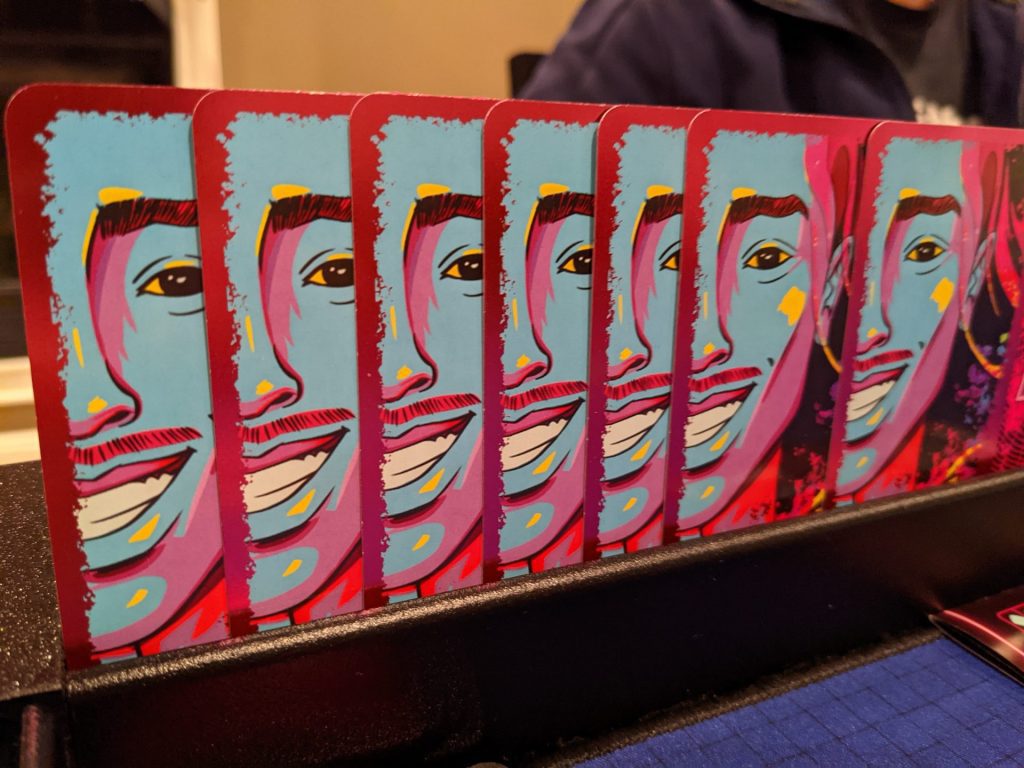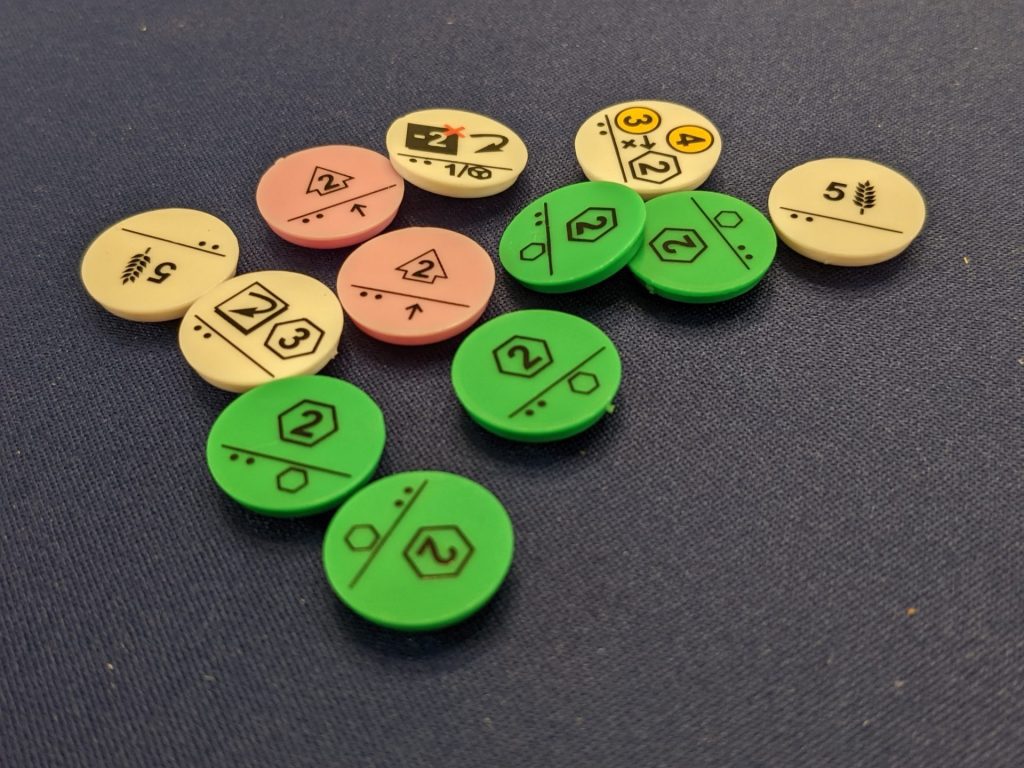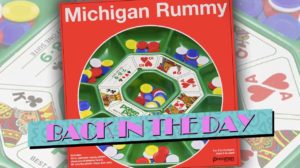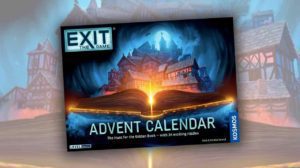Whenever I meet someone and share that I spend time writing about board games, I always get curious looks.
Some people want to know why the heck I volunteer my time to write about board games. “You don’t make any money doing this??” still ranks as my favorite response. Others, particularly newer publishers and first-time game designers, want to understand how I evaluate a game. Still others, mainly my wife and children, look at me with wonder: you love something enough to spend hours each week writing about the experience, instead of just playing more games?
The “why I do it” is really quite simple, and it is twofold: there are not enough voices of color in the medium, and there is not enough critical commentary in our space. Sometimes, I will spend a week viewing, hearing, and reading content and I’m amazed that almost every game covered seems to be somewhere between good and an all-time classic. When I play games with my circles, that is absolutely not the case; some games are great, and some games are not. I love having a platform to share honest, unbiased opinions, to help people really see which games are worth the money.
Even though I’ve been playing games for 40 years, I’m only two years into my tabletop media life and I’m having a blast. As I enter year three, I thought it would be fun to discuss a bit of my process, a view behind the curtain of how I evaluate each game. And who knows? Maybe we’ll do this with other writers on the team so that you can continue to learn more about how our writers choose to break down new products.

How I Pick Games
I like to select games for review that fall into the categories that I’m most comfortable discussing, based on my personal preferences. Although I tell people that I will play anything, a look at my collection reveals a few distinct truths. I am mainly a lover of light and medium-weight Eurogaming experiences (Tiletum), efficiency puzzles that typically play in two hours or less. I also enjoy economic games (City of the Big Shoulders), direct-interaction/combat games (Wildlands), trick-taking games (Anansi), party games (Wavelength), the occasional roll-and-write/flip-and-write experience (Dinosaur Island: Rawr ‘N Write), and family games of almost any format (thanks to my two kids, ages 8 and 6).
I use a variety of sources to select games. I start with our internal process for selecting review copies; thanks to the relationships we have with publishers, we are often given the chance to review games via e-mails sent to our founder and lead editor, Andy Matthews. There’s also a Facebook group for tabletop media and relationships through trade magazines, as well as associations like GAMA (Game Manufacturers Association), where additional review copies can sometimes be found.
The majority of my sourcing comes from work I do on my own. That starts by mining information on sites ranging from BoardGameGeek, ICv2, Dicebreaker, and crowdfunding platforms like BackerKit, Kickstarter and GameFound. Between games that are on “The Hotness” at BGG, to news of upcoming releases, to games that were crowdfunding 18+ months ago that are now fulfilling to retail channels, there are always new games coming in that we would like to cover, so reaching out to publishers directly also produces a sizable amount of our review copies.
Another major source of my pipeline is my personal network. I am asking friends all the time for recommendations on games they have on their radar that they would like to see us cover. Often, there are games that I have never heard of that I pull in to review simply because another friend wanted to see the game up close. I always reward those friends by giving them the copy of the game after covering it for our site, so that raises the stakes for friends to keep up on the industry.
Last year, my network expanded and now includes a sizable number of other tabletop content creators, influencers, and people working in various functions in the game world. You’d be surprised how often someone at, say, Panda Manufacturing sent a text last year saying something like “you need to play _____ as soon as you can.” Or someone I met at a gaming cafe in Chicago would recommend a game that I needed to try. Many of the people I met at SPIEL ‘22 had suggestions for games, too.
In 2022, the biggest lesson I learned for gathering review copies is to simply go to conventions. I love chatting with publishers, marketing directors, designers, and booth volunteers about the games coming to market, and I often leave shows with anywhere from four to forty review copies. I write about every single game, so I know I have earned the trust of many publishers simply because I never take a game unless I am sure I can cover it on our site.
Generally, I like to play games in the order I get them from publishers, but I’ll be the first to admit that there are exceptions. When games that could drive the most traffic to our site arrive at my house, those games “jump the line” and I’ll get plays in quickly to ensure those reviews hit the site as soon as possible.
One thing I will not be doing in 2023, though: reviewing prototypes. Some content creators, and even some of our own team members, like to see games in their near-final state, or when rules are still being finalized, or when production is not at the final stages. Personally, I like reviewing the game that players will get when the final retail version of a game is made available. In this way, my experience will be consistent with their own.

My Review Crew: Who Joins Me at the Table?
I have the great fortune of hosting a “review crew”, a pool of about eight people, at my house every Monday night. I built my current group by posting an ad on Facebook! I wanted to gather people who live close to my new home in the Chicago suburbs, and it’s been a great way to meet new friends.
The review group shares tastes similar to my own, but all bring a unique perspective to gaming. We’ve intentionally included a couple of gamers who are relatively new to the hobby, while others have been gaming for 20+ years and at least one other person works in the tabletop space. That provides fun perspectives on each game as I balance my own critiques with those from the group.
I also play games with four other gaming groups in the Chicagoland area. One is a group I’ve known for 10+ years that plays once a week; another is a heavy strategy gaming group that kicked off during COVID. About two years ago, I joined another group through a friend that has been playing together for 15+ years. I also play games with a group of guys that I see once every other month in the suburbs; a couple of those guys will play anything, so I get some of my “First Take” games in with this group.
My final play partners are also the most reliable: my wife and kids! My wife will try anything mainly because I don’t give her any choice, but she also provides some of the best commentary that I include in the finished review. My kids are the most reliable test audience in history; if they want to play any of the family games twice or more, I know we have a winner.
I like to finish my plays on each game in the same week that I start those plays. I like to do a walkthrough or a “dummy” play of a new game on a Sunday, then do a first play (or more, if we can squeeze them in) on a Monday, then get another play in with a different gaming group sometime that week, then finish up with my wife’s thoughts during our game nights on Fridays. (Cocktails and games are a staple on Fridays!)

How I Break Down Games
When building my thoughts on a game, I usually play a game three times before submitting a review to our editorial team. If I finish those first three plays unsure of where I land, I often play a game a fourth, maybe a fifth time, especially if it is short. I will rarely play a game more than that; in the case of something like Dice Realms, where I was really torn on where I would land, I played that one a whopping eight times with a variety of groups to see if everyone was feeling the way I was.
On occasion, I’ll play a game only once or twice, usually because that game is terrible. And when a game is terrible, and everyone at the table knows that, it is hard to trick those same players into multiple plays. (That only happened a few times in 2022; games like Deal with the Devil, Orlog: Assassin’s Creed Dice Game, and The Treasure of Montecristo Island come to mind here. In each case, one could tell that the question “wanna play again?” would be answered with cold, no-thank-you stares!)
I will usually try to play the game once at each possible player count, with my wife serving as the foil for the two-player games. (She is also the beneficiary/victim when I review two-player-only games.) This becomes important when games feature asymmetric roles; in the case of games like Circadians: Chaos Order or Crescent Moon I try to do enough review plays to play as each character/faction once before finalizing the review.
As I begin the draft for each of my reviews, I always start with the same guideline: is the game fun?
I like to write my first draft of a game after the first play, then make adjustments during subsequent plays. My excitement about a game is usually highest during the discovery of that first play and I try to write with that voice during my reviews. My style is very conversational; I write the way I talk, but also the way I prefer to listen, so you will rarely see complex, difficult vocabulary in my writing. (My writing voice is very “plainspoken.”)
While I do make updates to the first draft after subsequent plays—mainly to things like replayability, how player count changes the overall experience, and whether certain strategies seem to work each time I play—the first draft makes up the bulk of my final draft. I can think of only a couple of games last year where my opinion changed enough to scrap the entire review and start anew, so my first impressions have generally been on target, at least to how I feel about the fun factor.
Between requesting a game from a publisher, receiving a game, getting it to the table (usually a few weeks after it arrives, since I have other games in the queue), writing a draft, and getting articles reviewed then approved by our editorial team, it usually takes 60-90 days for me to post a review. Writing reviews is a major investment!

What I Don’t Do: Read, Watch, or Listen to Other Reviews (At Least, Initially)
Now, let’s be clear. I read reviews and listen to podcasts from peers all the time. (I don’t watch much video content, as most of the video content creators I follow preview games instead of providing thorough, critical analysis.) But I never read reviews of games I am about to review myself.
That changes as soon as I submit my draft for editorial review. Then, I literally hunt for content to see what others think. I find that I am doing this to ensure that I have not missed anything significant with the rules, but it is fun to see what others found during their plays.
I find that it’s also important to make sure a reader knows where I clearly land on a game. That’s important on our site because we don’t yet provide a numerical rating or a score for a game. The hardest reviews to write are the ones where we would probably score a game a 6 or 7 out of 10; the game’s fine, maybe above-average, but would I really want to play it over something similar and stronger?
As much as I can, I never leave a reader wondering what I think. If the game is great, I celebrate its existence. If it is just fine, I will usually say something like “everything here is fine” and implore the reader to pick up something else instead, telling you what that something else should be. And, if the game is garbage, the game is garbage, and you need to know that.
That’s because the number one reason why I write reviews is to help people make a buying decision. (My colleague Ian Howard has some great thoughts to share when considering how other media members compose reviews.) Games are expensive, folks. Money is limited. I’m doing alright financially and I still make very careful decisions with my money. I think that way when I write about a game: do you need to own this game? If not, is it worth playing, ideally at a game cafe, library, or as the result of someone else’s good fortune?
And if the game is bad, should you play it at all? Fun is the driver, but the bottom line is cash. No one has the time or money to play 1,500 games a year, despite that many coming to market on an annual basis. I reviewed 139 of them, and my sincere hope is that I helped readers decide on a game or two that they really should have in their collection.
I hope this provided some helpful insights into how I think. I’d love to hear your thoughts in the comments!











Great article. I discover you this year and very like your review. A reader from France.